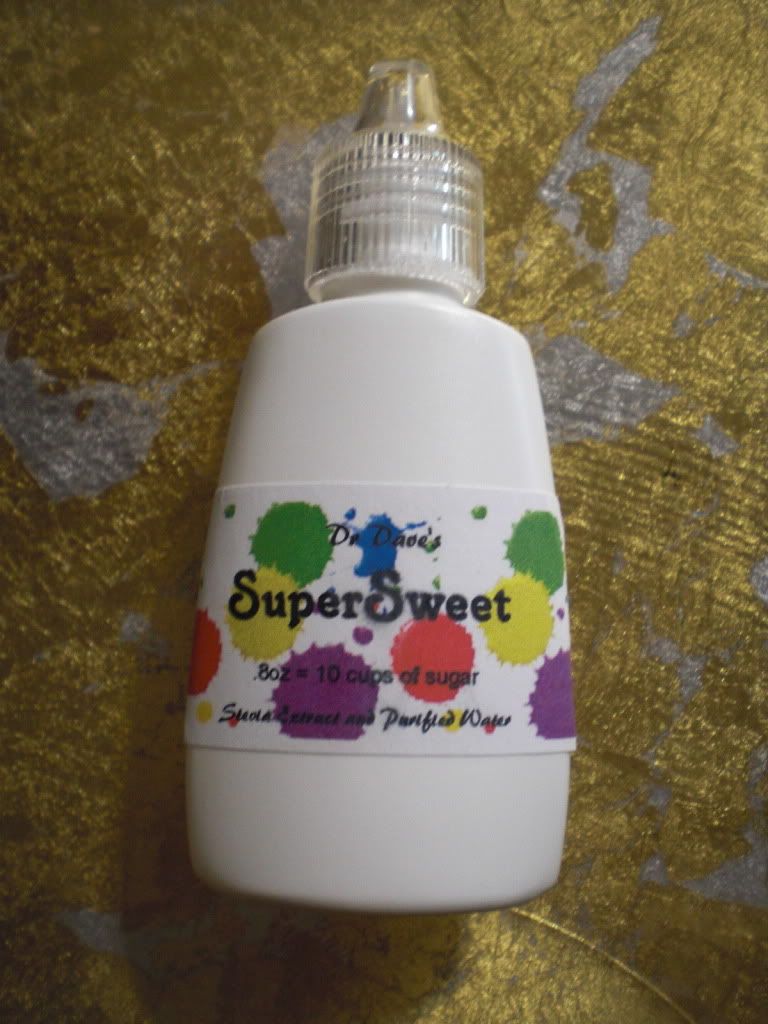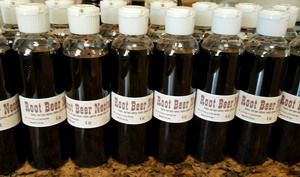| Welcome |
|
August 7, 2016
Starch – friend or foe?
Hi ,

Is starch good for you, or bad for you? The question is not really about starch, but about you. Look around, everyone you see and know all look different. Check out who is wandering around the grocery store and notice the huge diversity of body shapes and sizes. We are all
different on the inside just as much as we are all different on the outside. The biggest trick to gaining good health is to figure out what foods work well for you and what foods do not. Ignore what the government health pyramid says and ignore what most science studies say because they are all based on “average” responses to each study. The problem is very few of us are part of the average.
This reality was driven home once again to me yesterday after reading a long article on the benefits and problems of taking resistant starch. There are hundreds of kinds of starch. One large class of starches is called resistant because they resist being digested by our digestive tract. However various bacteria in our gut can digest them. Depending upon just what bacteria we are talking about, this could be a good thing or a bad thing. Some bacteria turn
the resistant starch into special short chain fats like butyrate, which help heal our gut lining. Other bacteria turn resistant starch into poisons that inflame our gut lining.

In the article I read the author was writing about some folks that had found a particular corn based resistant starch had helped them enormously with their irritable bowel syndrome while another group of people had the same starch trigger flare-ups of their IBS. The author was reviewing many different resistant starches like raw potato starch, plantain starch, arabinogalactans from larch trees, glucomannan from konjac root, and corn starch. Many resistant starches are
used in packaged foods to give them various desirable consistencies and qualities, so you are probably eating them without even knowing.
A few years ago the tremendous benefits of probiotics started really gaining steam in the public. This highlighted the importance of what else was in your diet to feed the good bacteria. A gut full of good bacteria is like a yard full of chickens – you have to feed them the right foods for them to survive. Different bacteria eat different things. Many of them like starches, in particular the resistant starches, because these are what is left over for them
to eat after the first stage of digestion. We suck up most of the digestible starches for ourselves by turning it into sugar and pulling that sugar into the blood stream. What’s left over is what the bacteria grow on.

The bottom line is that no one knows just what bacteria types you have in your gut (there are thousands of types), so there is no easy way to know what types you have in your gut and in what quantities. (We each have 500 different types of bacteria on average in varying percentages.) So just from a gut bug perspective, the only way to know if a particular starch is good for you is to try it out. As little as a teaspoon can produce a reaction if your system does not
like it.
As you can see, whether a starch is a friend or foe begins even before we talk about the impact of the starch on your own body cells as it impacts the bacteria we carry around in our gut. Now lets talk about the impact of starch on our own cells. As I already wrote, there are many kinds of starches. The simplest starches almost immediately turn into the simple sugar glucose and are absorbed in the first foot of the intestine – the duodenum. A puffed rice
cake is a good example of just such a starch. Within minutes it becomes sugar in the blood – faster even than white table sugar.

On the other end of the spectrum is something like parboiled or converted rice. The parboiling process converts the starch into a form that breaks down very slowly in our gut. If you have any blood sugar issues, parboiled/converted rice is the way to go. It takes hours to slowly convert into sugar and be absorbed into our blood stream.
This highlights the second main difference between people – blood sugar stability. Here again, everyone is different in how stable his or her blood sugar is. Some people can eat doughnuts and drink soda and have fine blood sugar levels while others only have to drive by a doughnut shop to go into a diabetic blood sugar crisis.

This is all about very complex hormonal, neurological, metabolic, and immune system differences between people. It also has to do with just how long a person’s system has been abused by too much starch and sugar.
Over time it takes its toll.
Another realm of individual difference is the issue of food sensitivities, lectin reactions, and allergies. For instance, by some estimates, nearly half the population is sensitive to potatoes creating joint swelling and pain. All seeds and grains are covered in the plant poisons called lectins in order to keep mold and insects away. These same plant poisons affect many people, but not all people. All natural food sources of starch also contain small amounts of
allergenic proteins – at least allergenic to some people. So again, without very expensive testing there is no way to know who is sensitive to what starches.
Ok, so how do we test starches for ourselves? What are we looking for?

The most common symptoms of starch reactions are bloating, belly swelling, excess gas, pain anywhere, loose stools or constipation, and back pain for the GI system. Blood sugar reactions include tiredness after eating, craving sweets after meals, headaches, and a waistline either greater than 35 inches or wider than your hips. Sensitivity reactions can be almost any symptom, but commonly include joint pain and swelling, mental confusion, swelling in the feet or hands, water
retention, heart palpitations, and lung/sinus issues.
The first step to testing for reactions is to get clear of any current reactions by avoiding any possible offending foods. The classic technique is to do a lemonade diet for 3 to 4 days - that is consuming only lemon water with maple syrup for sweetening only for 3 to 4 days – no food. This should relieve any food reaction symptoms other than stubborn autoimmune stuff from foods like gluten and dairy. Since we are testing for starches specifically, we could
instead do 3 to 4 days of just meats, non-starchy vegetables, and leafy greens –  soups, salads, and stir-fries. If this eliminates the troublesome symptoms then proceed with the starch challenge testing. If this does not eliminate the symptoms then you will have to go the full lemonade only process to see if that gets rid of the symptoms before testing. soups, salads, and stir-fries. If this eliminates the troublesome symptoms then proceed with the starch challenge testing. If this does not eliminate the symptoms then you will have to go the full lemonade only process to see if that gets rid of the symptoms before testing.
Test by adding one starch at a time with several hours between each test. Watch for any appearance of the symptoms you were concerned with. Obviously if you have a reaction to a starch, eliminate that source of starch from your diet for now. While this may seem like a difficult protocol, it is nothing compared to the suffering someone with IBS or ulcerative colitis goes through. If this can pinpoint the causative triggers for these conditions then it is well
worth it.
If all you have is trouble with bloating and gas then a simple food diary with a record of any symptoms during the five hours after each meal may enable you to pinpoint the bothersome foods.

The bottom line is that we each have different insides that react differently to foods. There are no rules that apply to everybody in the diet world. You have to find out for yourself just what foods feel good in your tummy and give you energy and mental clarity. Foods that bloat you and make your brain fuzzy simply need to be avoided most of the time. So if you have been frustrated trying to follow other peoples advice about what is and is not right for your
body, the answer is to check in with your body to find out the truth.
Until next time,
David
Ellen update: 
This is a big weekend for Ellen - her first trip since her stroke. We are going up to Portland to visit my brother Daniel and his wife Satya at his 27 acre farm outside Portland. It is a bit of a family reunion. This will be Ellen's first plane flight using a wheelchair and all that entails. Wish us luck...
|
| H |
Tomatoes may trigger gout Gout is a really painful type of arthritis caused by microscopic uric acid crystals depositing in your joints. A recent large study found that tomatoes can raise uric acid levels in the blood and trigger gout. Sugar, meat, and alcohol are already known triggers. Tomatoes seem to be the 4th most common cause.
Gout is a really painful type of arthritis caused by microscopic uric acid crystals depositing in your joints. A recent large study found that tomatoes can raise uric acid levels in the blood and trigger gout. Sugar, meat, and alcohol are already known triggers. Tomatoes seem to be the 4th most common cause.
Gout
_____________________________________________
"You cannot create experience. You must undergo it."
~ Albert Camus
__________________________________
Eating less makes you live longer, healthier Calorie restriction is known to lengthen life spans and reduce disease in many animals. Now a 2 year study targeting a 25% sustained reduction of calories in humans has shown similar results. Heart disease markers and diabetes decrease and thyroid hormone levels decreased - a common sign for longer life.
Calorie restriction is known to lengthen life spans and reduce disease in many animals. Now a 2 year study targeting a 25% sustained reduction of calories in humans has shown similar results. Heart disease markers and diabetes decrease and thyroid hormone levels decreased - a common sign for longer life.
Calorie restriction
______________________________________________
"Don't walk behind me; I may not lead. Don't walk in front of me; I may not follow. Just walk beside me and be my friend."
~ Albert Camus
_______________________________
Flu vaccines may not work on the obese This has been discovered in mice. Flu vaccines that protect lean mice don't protect fat mice. This raises the concern that this is also true in people. Using multiple vaccinations and chemicals to supercharge the vaccine (adjuvants) did nothing to improve the results.
This has been discovered in mice. Flu vaccines that protect lean mice don't protect fat mice. This raises the concern that this is also true in people. Using multiple vaccinations and chemicals to supercharge the vaccine (adjuvants) did nothing to improve the results.
Vaccine
"To be happy we must not be too concerned with others."
~ Albert Camus
________________________________________________
Our address is 9725 Fair Oaks Blvd. suite A
Our hours are M - F 9 to 1 and M, Tu, & Th 3 to 6
Finding the new location is very easy. Coming from highway 50 up Sunrise Blvd, you turn left and go up a block. We are on the right hand side - the building just past the Subway Sandwich shop. If you are coming down Sunrise from the Mall area then just turn right on Fair Oaks Blvd and up a block on the right.
If you are coming from the Roseville area you could come down Sunrise Blvd, but that is a long trek. It is probably shorter time wise to come down Auburn Blvd - San Juan Ave like you have been for the Sunset office, but instead of turning left at Sunset, keep going straight 3 more lights to Fair Oaks Blvd and turn left. Go down 2 lights to New York Ave, go through the intersection, and immediately turn into the turn lane once the center
divider ends. We are on the left.
You are free to reprint this article in your newsletter as long as you include the following statement in the same size type and color:
"This article appears courtesy of Fair Oaks Health News, offering natural and healthy solutions for body, mind and soul. For a complimentary subscription,
visit http://www.fairoakshealth.com"
|
| |
|
|
|
_______________
to check on old newsletters
_______________
About Dr. DeLapp
|
Dr. DeLapp has been a philosopher, non-force Chiropractor, medical intuitive, and health innovator for over 30 years. He began experimenting with medical intuition in 1972 while studying physics at UC Davis. In addition to physics he designed and completed an individual major in the philosophy and psychology of education. Shortly after he choose to pursue a career in the only
truly health oriented profession available at that time, Chiropractic. He graduated with honors in 1981 with his doctorate and opened a private practice.
Since that time he has continued his research into the effects of consciousness and learning on health.
He developed the Biomagnetic Retraining system for correcting movement abnormalities.
Since 1991 he has focused on developing a powerful system for uncovering and assisting the mind-body connection in health and personal growth. The in-depth coaching, guided by the subconscious direction from the body, is called Heartflow and the simpler mind-body retraining for health and unfoldment he has named Gracework. Both are available at Fair Oaks Health.
Fair Oaks Healing
& Arts Center
Staff
 Dr David DeLapp DC
Dr David DeLapp DC
Chiropractor
Ellen Flowers FGM
Spiritual Life CoachEnergetic Nutritionist
Health Care Coordinator
Susan Richardson
Office Manager
Front Desk
Sherry Herrera
Front Desk Person
Susan McDonald
Catherine Cummings
Is there a sweet that is not poisonous? Yes!
 Dr Dave Supersweet Drops and 2X Sugar Substitute
Dr Dave Supersweet Drops and 2X Sugar Substitute
New Products
Flax Lignans

Root Beer
 Safe Antiperspirant
Safe Antiperspirant

|
|

